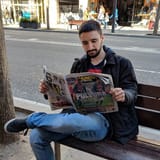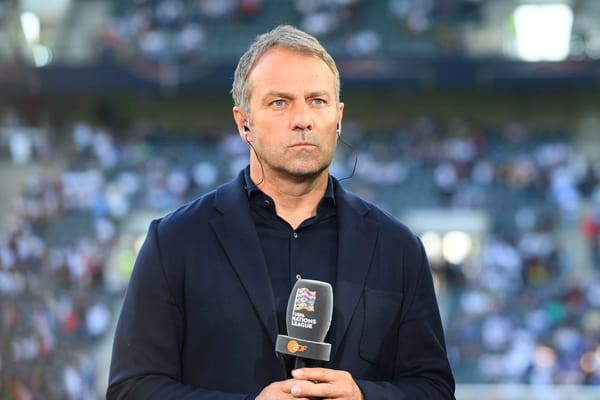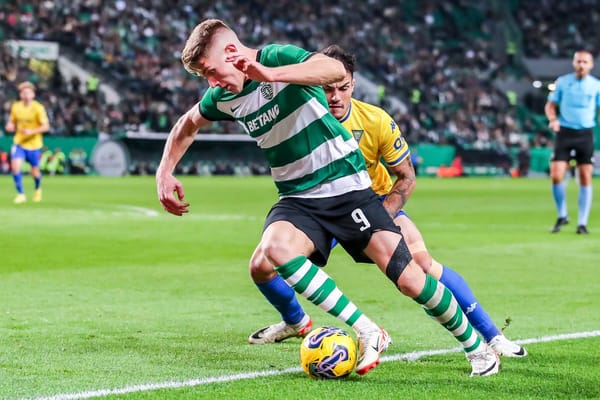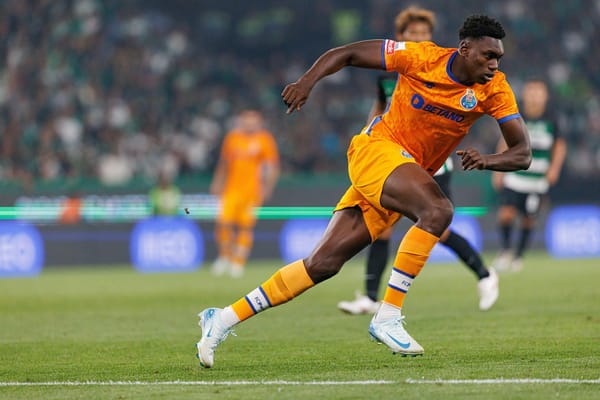Eric García & Xavi's backline dilemma
Eric is very much a player who snuffs out attacks by reading the game well and staying a step ahead of his opposition.
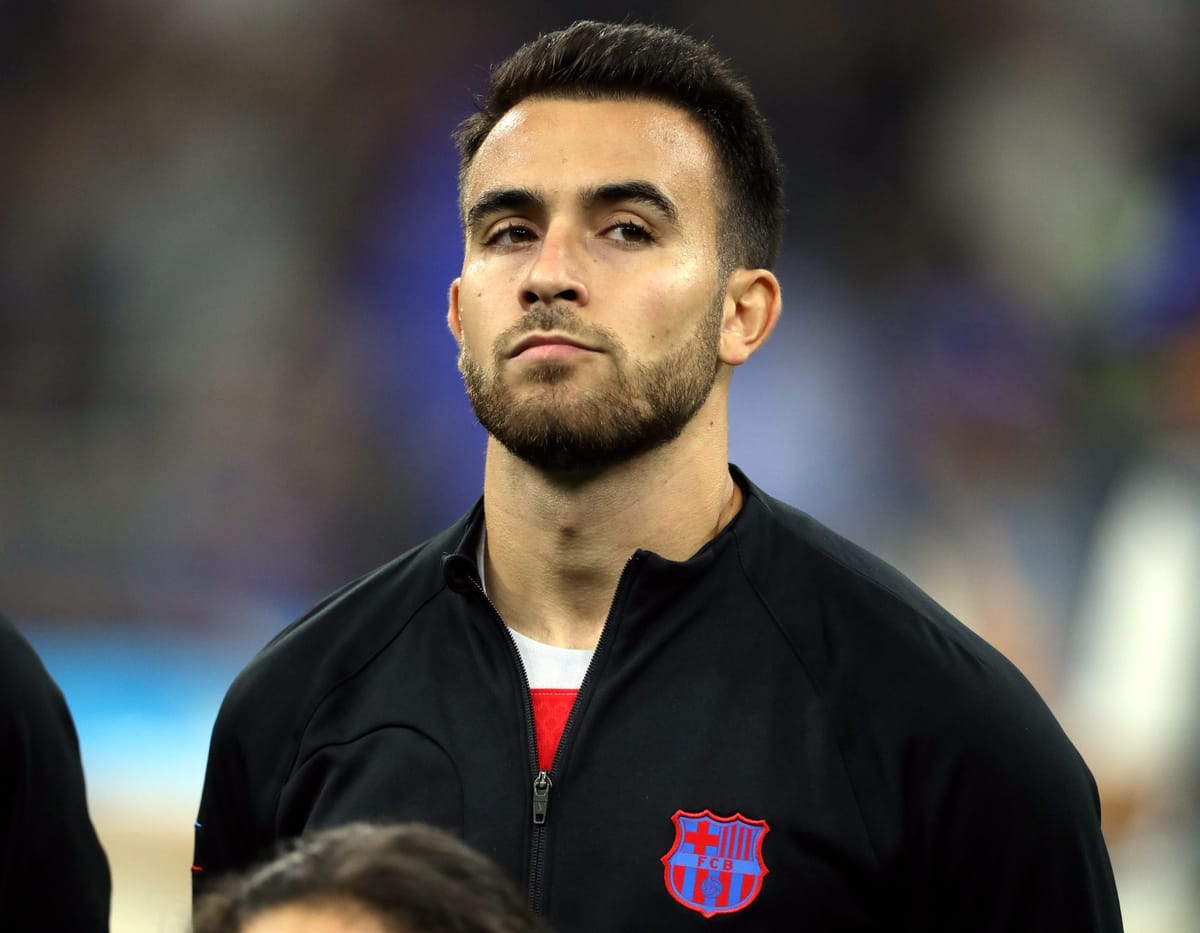
Analysing defenders is a very unenviable job. Data may be taking over the industry but even with so many tools at our disposal, it’s very difficult to paint the real picture. The metrics, for one, are very vague when it comes to (most) defensive aspects. Simply looking up a player’s number of tackles and interceptions won’t really do much, the same as his offensive contribution won’t help either.
Another issue we often face in such situations is analysing certain profiles of defenders who fit a very specific type of system. Generally, every club will have its own preference. What I mean by this is that not every profile of defender will fit every club’s philosophy. Just because someone is a very traditional centre-back - big, strong and amazing in 1v1 duels - won’t mean he’s ideal for a particular system. In that regard, analysing how well a defender would do at Atlético Madrid as opposed to Barcelona is very different.
This is very important when talking about Eric García. By very traditional measures, a 182 cm (6'0''), 76kg (167lbs) defender who is often easily brushed off in duels and lacks real pace would be easily labelled as ‘not good enough’. But that very general and superficial analysis disregards his other qualities that may be key for a system akin to Barcelona’s. Of course, pace, strength and other defensive traits will always be relevant when profiling defenders. After all, that is their primary job.
So how do you work around his deficiencies and highlight his strengths? That is the job of the system or rather, Xavi’s job as the coach. But first, what do we even know about Eric and his profile?
A midfielder trapped in the centre-back role
By now, everyone is aware of Eric’s on-the-ball abilities. After all, the 20-year-old was moulded in LaMasia, studying and perfecting their philosophy and style of play. If you look at the academy now, it still fosters the same principles so it doesn’t surprise the likes of Mika Màrmol, Arnau Casas or Diego Almeida have similar attributes across different age groups.
Eric is very much a player in that same mould. He’s not overly physical but rather extremely technical in what he does on the pitch. With Gerard Piqué slowly diminishing, Ronald Araújo being somewhat less prolific in that regard and the likes of Clément Lenglet and Samuel Umtiti unreliable at this point, Eric’s profile is very much needed.
Barcelona are a team that love to build up from the back, putting a lot of emphasis on controlling games by retaining possession until cracks start to appear in the opposition’s block. To do that, you need a good ball-playing backline that will be comfortable having a lot of possession and inevitably recycling it a lot. Sideways passing is not the most aesthetically pleasing to most fans but is still incredibly important for possession-based teams.
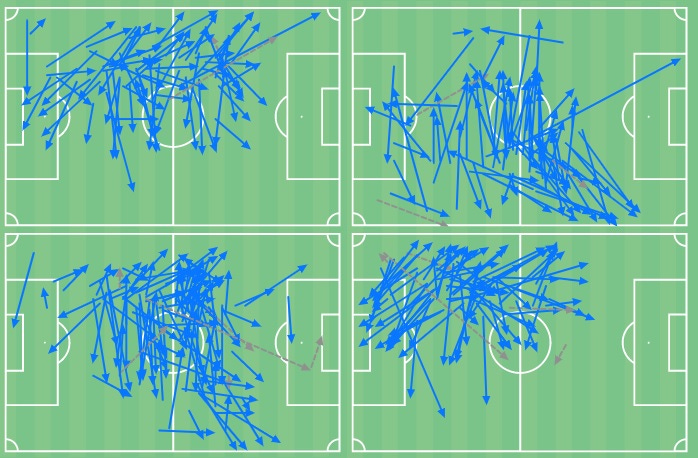
Of course, there are some caveats to this. Sideways passing for the sake of passing won’t give you much so it has to be combined with a) proper tempo setting (speeding up and slowing down according to the team’s needs) and b) incisive movement that opens passing channels for progression. Admittedly, the second point is more related to the potential receiver than the ball-carrier in this instance but still applies to both.
Needless to say, Eric is incredible at ball retention and recycling, boasting an average of 69.69 passes per 90 minutes (95.62% accuracy), enough to rank him fourth in pure output and second in overall accuracy in the current LaLiga campaign according to Wyscout. But another important trait Barcelona centre-backs have to be proficient at is ball progression.
The first phase of build-up is key in their attacking sequences and while the pivot position is crucial in this regard, the backline will usually be the one tasked with initial progression. Once again, Eric excels at that too. When analysing ball progression by minute, he ranks second in LaLiga with 6.63, second in progression per loss with 147.52, third in progression by runs with 151.2 and second in progression by passes with 445.93.
Here’s a nice sequence of play that showcases this ability well. Eric is not afraid to run with the ball when superiority has been achieved and will then recognise the space in front of him and exploit it.
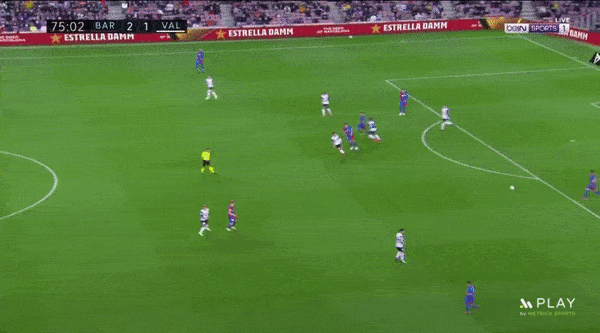
Just by looking at the stats above, we can conclude no one in Barcelona’s current squad comes close to rivalling the 20-year-old in ball progression. That alone makes him a key cog in Xavi’s system, especially considering the emphasis the new coach puts on verticality, superiorities and ball-retention.
But as we’ve previously concluded, regardless of his on-the-ball quality, a defender will always be judged on his defensive traits too, as it should be. So, what is Eric like out of possession?
‘The mind is the key’
Now we come to the tricky part of the analysis. One of the reasons why defensive metrics are vague is because they don’t take possession into account. Teams with more possession subsequently face a much lower quantity of duels and challenges, thus affecting their output. This is somewhat solved by introducing PAdj (possession-adjusted) metrics but still remains a largely unperfected aspect of pure data analysis.
And considering Eric doesn’t crack the top 30 in any of defensive duels, interceptions, aerial duels or shots blocked, it’s safe to say the numbers aren’t exactly in his favour. But just like most Barcelona players - bar perhaps Araújo - Eric is all about early prevention rather than intervention. Of course, that’s not to say Araújo isn’t capable of that — he most certainly is. But he has the pace and the power to deal with duels or foot races, should it come to that. Eric doesn’t.
He’s not particularly fast nor can he accelerate quickly. In direct challenges, he can get shrugged off and outmuscled, and his tackles are not always well-timed, creating an opening for the attacker to outmanoeuvre him. But one thing we do have to point out here is how aggressive Eric gets in defensive duels.
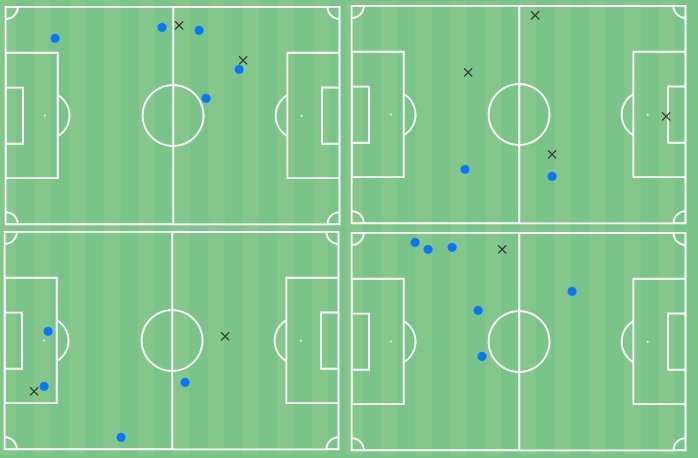
This is also a trait many Barcelona centre-backs share; they will aggressively step out and attempt to intercept the ball, for better or worse. Eric does this with varying levels of success, registering a 64.5% win rate in defensive duels on a sample of 6.75 per 90 minutes. That would mean he roughly wins around 4.35 defensive duels per 90 minutes out of the 6.75 he engages in, which is a solid figure overall.
But as we’ve seen against Villarreal, Eric will struggle defending the wide areas against pacy and tricky players. Yes, he may have the protection of the byline to his right but wide defenders get isolated much easier than central defenders because teams generally put more emphasis on defending the centre, congesting it and denying access to favourable zones like zone 14.
And this is also where Xavi’s dilemma comes from. Deploying a back three can mask some of the individual deficiencies players might have, both in and out of possession. For those who are weak on the ball, pairing them up with teammates who are more comfortable in possession and leaving the progression task to them will help out immensely. At the same time, if you pair up a highly technical player who struggles in some defensive aspects with a teammate who excels at exactly that, it will help too. That doesn’t mean the back three is necessarily easier.
We’ve already mentioned defending the wide areas can get very tricky, as is providing cover for the wing-backs who are mostly offensively oriented and not to mention the in-possession responsibility that falls on their shoulders. But the conundrum Xavi faces now is how to organise the backline. Ideally, you’d have your best progressors out wide because they have easier access to the half-spaces, as can be seen below.
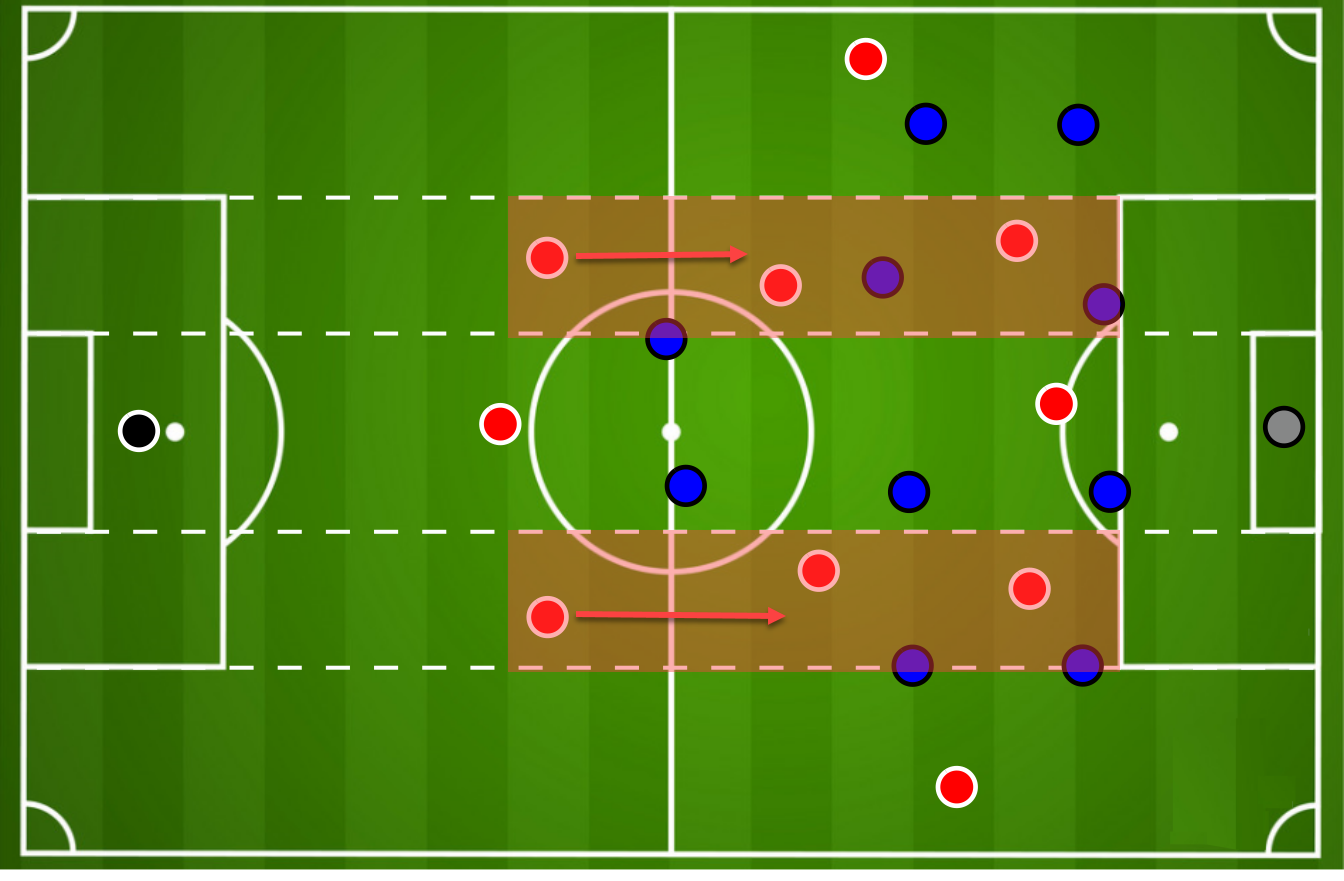
And while this can be done with a centre-back tandem as well, the back three gives you natural superiority against most pressing squads, either forcing them to commit players from the second line or alter their structure entirely to combat the numerical disadvantage. Given the importance Xavi puts on half-spaces, it’s easy to see why you’d want someone like Eric accessing them regularly and more easily.
We’ve seen that he loves to progress both via passing and running so when you contrast that to someone like Araújo, you realise Barcelona could lose a lot in possession by deploying the Uruguayan out wide. Xavi went into the extreme, however, when he deployed Eric as the inverted right-back against Villarreal. This is a concept I don’t personally dislike but there’s no escaping the fact the execution behind it was flawed.
In theory, this is not a nominal back three system but rather an asymmetrical 4-3-3 structure that creates a three-in-the-back by dropping one of the full-backs into the backline while the other pushes up once the superiority has been achieved. We saw the same against Villarreal. As Alba dropped into the backline, Barcelona would ensure the 3v2 numerical advantage over the Yellow Submarine’s front duo and that would allow Eric to push up into the midfield.
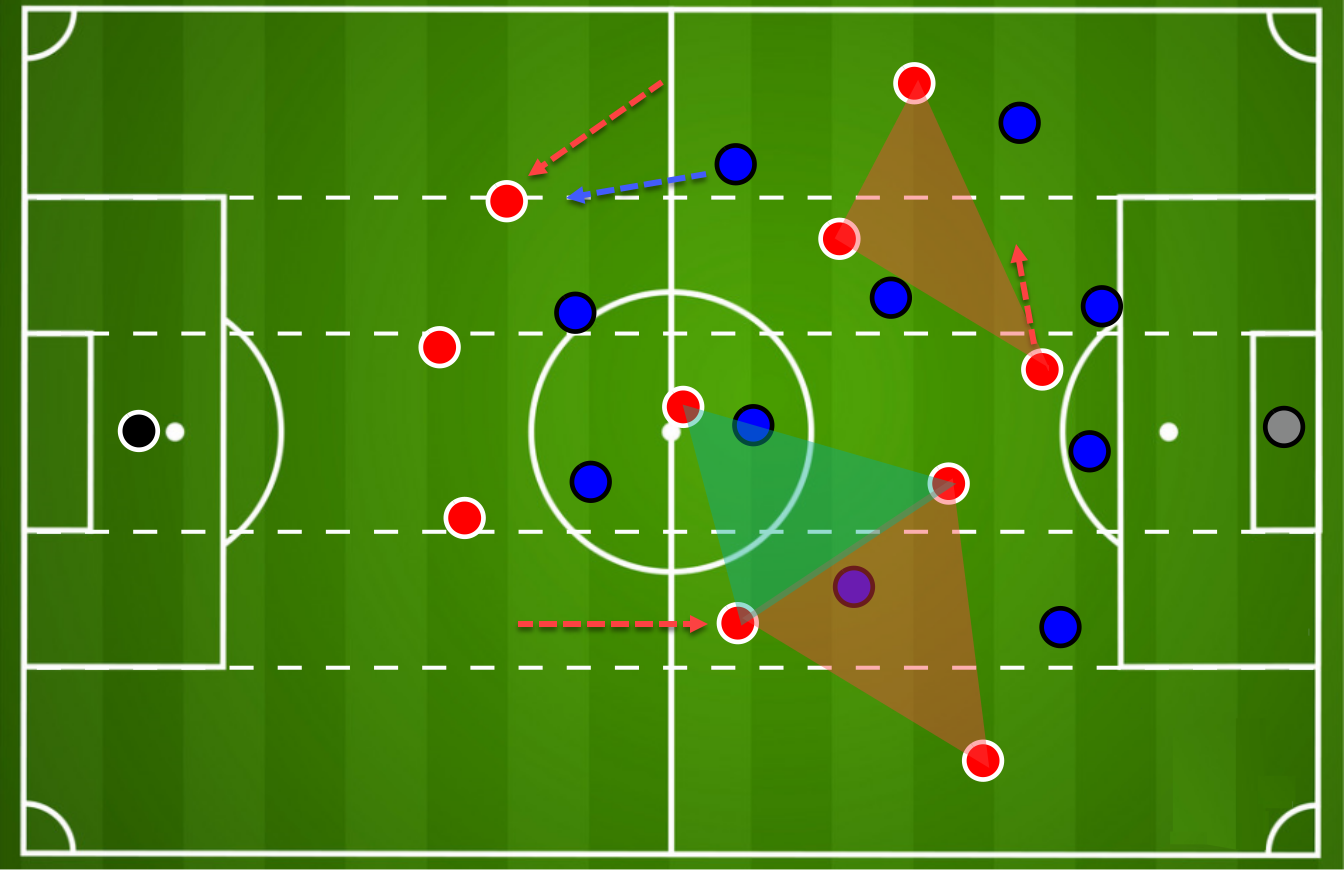
Of course, this has a ripple effect too. By dropping deeper, Alba would force Villarreal’s second line to react, pulling an additional player into the press. But if this can still be bypassed, it creates a lot of superiorities across other areas of the pitch, which is what Xavi wants to achieve. Suddenly, Barcelona’s left side can create a 3v2 or 3v3 situation and the right side can do the same.
Eric’s movement overloads both the wide area in a 3v2 and the central area just ahead of the backline (3v1 or 3v2). Additionally, it can isolate the striker should the opposition’s left centre-back decide to drift to combat the inferiority on the flank. So in theory, there are certainly positives to this and we can see why Xavi would want to experiment with it. However, it also poses a question of whether Eric has the right profile for the role.
His incredible on-the-ball ability is certainly a good argument for it but the lacking defensive side means Barcelona can easily get exploited out of possession. Someone like Sergi Roberto would fare in a similar manner as his profile is close to Eric’s in some regards. His lacking defensive prowess and/or pace could get exploited. Arguably something along those same lines can be said about Dani Alves too, whose defensive qualities were never the crème de la crème of his arsenal. But the Brazilian is used to that quasi-midfield role a lot more and is experienced enough to handle its many responsibilities.
Still, as we’ve mentioned already, Eric is very much a player who snuffs out attacks by reading the game well and staying a step ahead of his opposition. The mind is the key here and Pep Guardiola himself has praised the youngster for his intelligence on numerous occasions already. Working on this aspect could still transform Eric into a very well-rounded player in the near future. For now, however, his defensive deficiencies will have to be covered by other players, namely Araújo.
Against Benfica, we’ve seen that in action numerous times with the Uruguayan playing next to Piqué. Even though one was deployed centrally and the other one out wide, they would swap positions according to the needs of the team. When the Portuguese side introduced Darwin Núñez in the latter stages of the game, it quickly became evident his power and pace would soon overwhelm Piqué who was his direct counterpart. But Barcelona adjusted, either intuitively or by Xavi’s design, always ensuring Araújo would be the one marking Núñez.
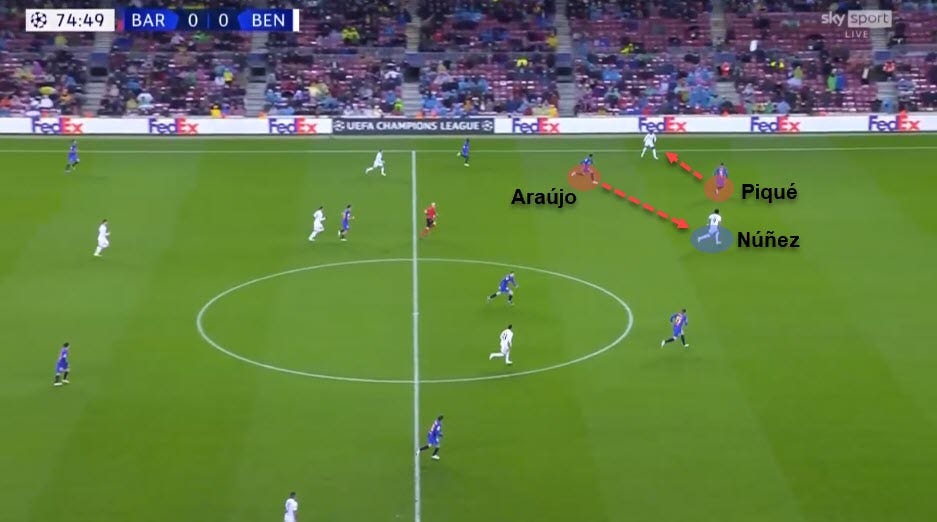
Notice in the image above how one starts centrally and the other out wide but they then quickly swap places as Araújo rushes to mark Núñez, leaving Piqué to drift wide. And that wasn’t an isolated case either. In defensive transitions, the two would often remain as the last line of defence. And in most of those scenarios, Araújo would take over the marking of Núñez.
We can see that in the GIF below too, which even shows us the Uruguayan instructing Piqué to leave the young forward to him. For a defender of 22 years of age to do this in the heat of the moment while playing next to a veteran and legend of the game is quite impressive, to say the least.
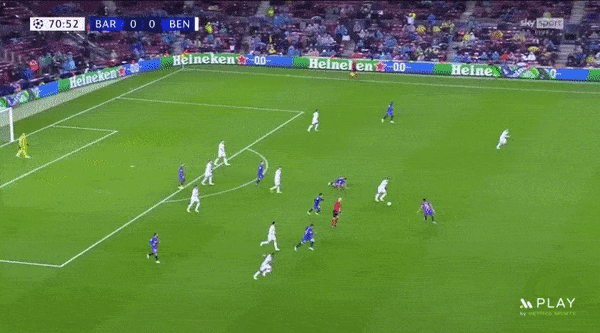
Of course, this will not always be possible and by deploying someone like Eric out wide, you will always run the risk of him getting isolated and burned in transition. However, if Xavi can instil proper rotation that adapts to the opposition, maybe they can have their cake and eat it too.
What I mean by that is they can use Eric’s passing abilities out wide while then having Araújo step in if the opposition’s danger-men are targeting that area of the pitch. Ideally, of course, Eric would improve his defensive traits over time, either by directly addressing the weak 1v1s or by enhancing his reading of the game even more, emphasising the ‘early prevention over intervention’ technique we discussed earlier.
Either way, while there is certainly potential in him and he has the tools to be a Barcelona regular, Eric still has a lot of work to do. However, that shouldn’t undermine the fantastic displays he’s had so far since his arrival from Manchester City.
All of that should be enough to keep us excited about what’s to come next.
